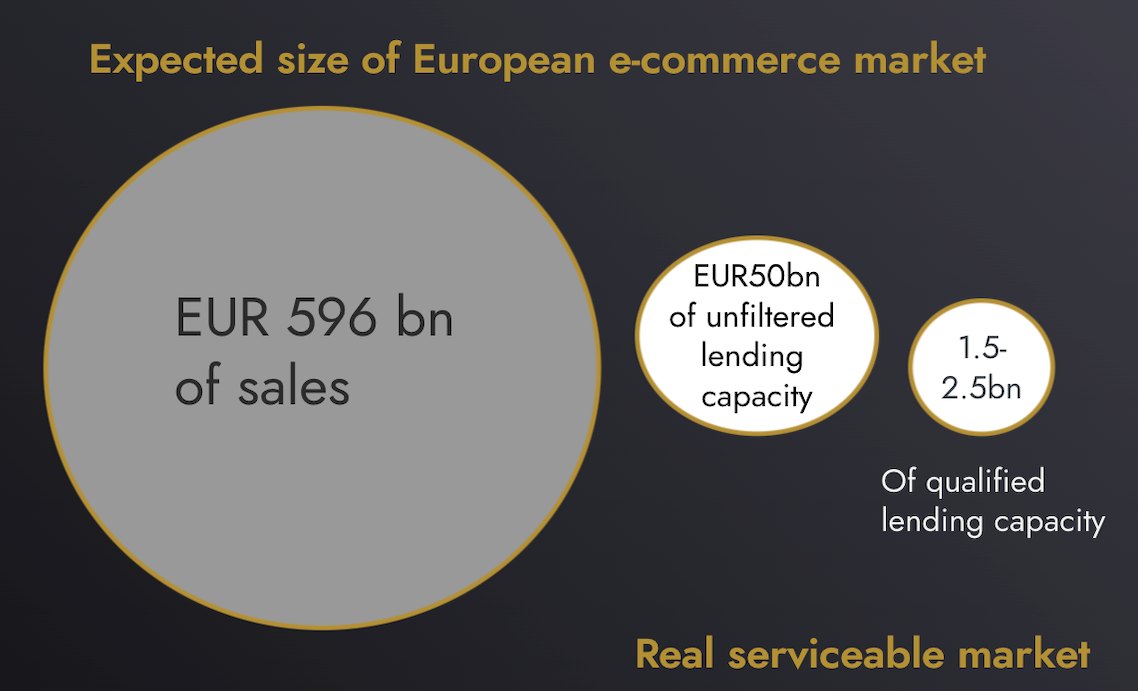50% of European fintech startups may not reach profitability, putting $550M of VC money at risk – WinYield

European fintech lending startups have secured more than €11 billion in debt facilities in 2023 to facilitate lending to consumers and businesses. However, there are emerging issues with their credit models and overall approach. Credit fund WinYield, following 95 in-depth interviews and due diligence of 27 fintechs, has uncovered significant challenges facing the industry.
WinYield’s investigation reveals a notable lack of credit experience among fintech lenders. Less than 10% of the interviewed fintechs had staff with relevant credit expertise. Many relied on black-box underwriting models using basic regression analysis without human input to assess the true viability of loans. The study found instances where delayed payments constituted up to 10% of the entire portfolio of fintech lenders, a rate four times higher than in bank SME portfolios. While the $12 billion in debt facilities is primarily senior debt, the €514 million ($550 million) venture capital is at risk, carrying first-loss exposure.
An examination of operating models in the report exposes the fact that many fintech lenders are operating unsustainable businesses. It becomes evident that most of them may never achieve profitability. This is primarily due to a significant underestimation of marketing and operational costs coupled with an exaggerated perception of the market opportunity.

WinYield presents the truly serviceable European e-commerce market for fintech lenders.
In a statement, WinYield founder and CEO Fabricio Mercier said, “E-commerce, for example, was a €596bn sales market according to Statista in 2022. It sounds like a huge number. But because there’s a 30-day sales cycle, fintech lenders in e-commerce have to lend 12 times a year to keep the same amount of lending on their books. In addition to this, the vast majority of e-commerce companies are either operating abroad or have very limited trading history. Factoring this in, the opportunity plummets to somewhere between €1.5 to €2.5bn. That’s more than 200x smaller!”
According to WinYield, many European fintech lenders are adopting the multi-product strategy and aggressive marketing budgets commonly seen in the US. However, this approach faces challenges in the fragmented European market, where the break-even portfolio size is considerably higher. Unlike the US, which operates as a single market with its own regulations, Europe consists of 27 different markets with varying rules, laws, and languages.
Competing across all 27 jurisdictions is extremely challenging for a single fintech. Additionally, adding a second product in Europe entails creating an entirely new client journey, operations, and funding facilities, resulting in limited synergies. To illustrate, the number of full-time employees per million of assets under management can drop as low as 2 for a single-product, single-jurisdiction fintech, compared to 12 for a multi-product, multi-jurisdiction model, as highlighted by Fabricio Mercier.
Achieving profitability poses a significant challenge for most European fintech lenders. Those that do reach profitability are likely to undergo multiple pivots and eventually collaborate with a bank. European banks are becoming more competitive, leveraging partners like Thought Machine and others to connect their APIs directly with fintechs.
Based on WinYield’s gathered data, a single-product, single-jurisdiction lending fintech may need to reach asset under management (“AUM”) levels as high as €150 million for a SaaS lender, €35 million for an embedded lender, and €160 million for a credit card lender to break even. Attaining these levels could prove challenging in many European countries.
“The VC funding drought has actually helped clean a lot of the malpractice in fintech lending, bringing European fintechs to their senses with a degree of discipline and rationality returning to their decision making. Now we are entering into the phase of Fintech 3.0, with more experienced founders doing more with less. Although there’s still a lot of learning to be done, the fintech sector is reshaping for a better future. By getting serious and institutionalized, fintech will grow again, partnering with credit funds and banks,” Mercier said.
Off the back of the report, WinYield offers the following considerations that fintech founders
could act on to achieve sustainable growth:
- Start with a small team of no more than 5 people, build a product that works well, and then start looking at scaling the business
- Find a funding partner who understands the intricacies of your operations and the fintech lending ecosystem and seek the highest LTV possible
- Find a niche market where a high cost of money solves a problem that is not related to high credit risk.
For investors, WinYield recommends:
- Don’t trust black box underwriting – you are the credit expert.
- Favour fintechs that are growing steadily by focusing more on their product and risk proposition as opposed to following a VC agenda.
- Partner with small funds or high-quality advisors to reduce your workload as transactions tend to be smaller than expected.
Despite the challenges faced by fintech today, the outlook is not all doom and gloom. In an optimistic tone, Mercier added, “Our latest industry report reflects that the ample liquidity provided by VCs fostered bad habits among fintech lenders. It’s become clear that the bull market of 2020 was creating an irrational bubble in fintech lending. While there are still many bad apples, we believe that the shortage of venture capital may bring European fintechs to their senses with a degree of discipline and rationality returning to their decision-making. However, a lot of education is needed to have a healthy market.”
WinYield is a specialized fintech credit fund founded in 2022 with a mission to offer first-loss financing to fintechs and deliver investment solutions to early-stage fintech companies. The firm addresses the pressing issue of limited venture capital funding for lending fintechs, especially those in the early stages of development. WinYield uses its proficiency in early risk identification through real-time, big data analysis and forms strategic partnerships with originators to enhance the underwriting process.

